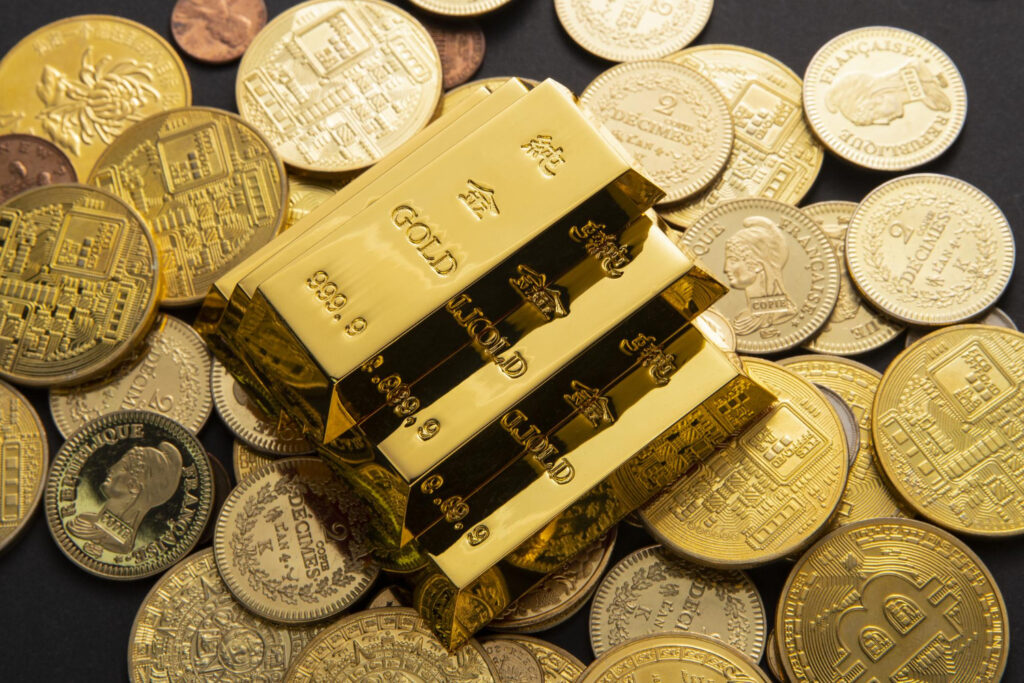Table of Contents
The gold metal serves as a buffer against fear itself, making it a fascinating asset for today.
In March, gold reached record highs of more than $2,100 per ounce. So is Gold Investment a good investment?
As an investment, gold’s bright spots come and go. It now has one, and with a valid reason.
Few topics in the investment world are more divisive than the glittering, golden metal. Some say it is a necessary holding to protect against inflation. Others consider it as little more than a barbaric relic with poor results. Warren Buffett famously argued for stakes in productive, expanding firms over a massive, inert cube containing all of the world’s gold, remarking, “You can fondle the cube, but it will not respond.”
This issue has been reignited as gold reaches historic highs above $2,100 per ounce this month. An assessment of the yellow metal’s long-term performance does not fully support either position. It has consistently underperformed stocks over long periods of time. However, it has also experienced significant periods of outperformance, including two of the last five decades, indicating that it can serve as a profitable hedge. However, it is unclear what gold is hedged against. It’s more than just inflation.

The modern history of gold as an investible asset class began in 1971, when the United States officially broke the link between the currency and gold at a fixed price of $35 per ounce. According to the World Gold Council, the price of gold in dollars increased by over ten times all through the 1970s. That outperformed consumer prices, which had virtually doubled over the decade. Gold also outperformed stocks, with the S&P 500 returning 78%, including dividends.
However, the yellow metal’s value fell by more than 20% in both the 1980s and 1990s. This coincided with two renowned stock market bull markets, which harmed the yellow metal’s reputation significantly.
Then, in the first decade of this century, another reversal occurred. The S&P 500, which was battered first by the dot-com bubble crash and then by the 2008-09 financial crisis, lost 9% throughout the decade, while the yellow metal surged 275%.
Moving out, from 1970 to 2023, the yellow metal climbed at a staggering compound annual rate of 7.5%, with much of that occurring in the 1970s. It has only matched inflation since then. Stocks have outperformed the lifeless gold cube, with the S&P 500 returning 10.6% a year from 1970 to 2023, or 11.7% if starting in 1980.
It makes sense. Stocks provide some intrinsic inflation protection since corporations generate income that rises in tandem with prices, allowing for proportionate growth in earnings and dividends. In addition, equities gain from real-world economic growth, which is supported by technology improvement and other progressive forces.
However, gold’s outperformance in the 1970s and 2000s was no fluke. The rally in the first decade of this century, in particular, requires greater scrutiny. Fears about extremely lax monetary policy had a significant impact, with the Federal Reserve cutting interest rates to 1% in the aftermath of the dot-com catastrophe, then dropping to zero and beginning quantitative easing during the financial crisis. However, inflation remained low during this era, with the consumer-price index rising at a compound annual rate of about 2.6% per year, including food and energy. This was a slower rate than in any of the previous three decades.
This shows that fear of inflation drove the metal, even if it never materialized. Perhaps it was a more generalized fear. Aside from the near collapse of the banking system, this decade was marked by war, terrorism, and increased political division. According to James Grant, a prominent gold advocate and editor of Grant’s Interest Rate Observer, gold reached a high of nearly $1,900 per ounce in September 2011, after Standard & Poor’s downgraded the United States’ credit rating in the aftermath of the debt-ceiling fiasco.

That wasn’t an inflationary event, but it did harm the perceived safety of US Treasury bonds—perhaps the most important store of wealth in the global financial system. This emphasizes another, lesser-known component of the yellow metal’s appeal. According to Grant, “gold’s primary virtue is that it is no one’s obligation. It has no national passport and no political affiliation.”
When faith in society and political institutions decreases, the appeal of the yellow metal and other precious commodities such as diamonds grows as alternative stores of value that are not dependent on social structures. They can also be moved in an emergency. Of course, as an investor, an actual calamity is not required to profit, with prices rising as concerns mount. Bitcoin and other cryptocurrencies have a similar attraction, but they are far less proven, less understood, and still face significant regulatory hazards.
Think about the present moment. The Ukraine war continues, tensions between China and the United States are rising, and a conflict over Taiwan cannot be ruled out in the near future. One of the most heated presidential elections in American history is approaching, with both sides of the political divide anticipating exceptionally serious consequences if they lose.

A more basic argument for the yellow metal’s recent rally is that the Fed is expected to begin reducing rates this year. Gold, as a non-yielding asset, tends to rise when alternative asset rates decline. However, rates are already rather high—even when adjusted for inflation—and are likely to remain so even after the Fed makes a few decreases.
“Historically, the primary catalyst has been real interest rates, but that relationship with gold has completely broken down,” said Giovanni Staunovo, commodity strategist at UBS Global Wealth Management’s Chief Investment Office.
In a recent letter, wealth managers at UBS highlighted to increased gold purchases by central banks around the world, which they said had reached their greatest levels since the 1960s, with more over 1,000 metric tons in each of the previous two years. The investments made by central banks could be interpreted as hedges against the dollar as a reserve currency. They may also be precautionary measures against future sanctions, particularly if they come from countries like China, in anticipation of further geopolitical instability.
UBS normally suggests allocating approximately 5% of a diversified portfolio to gold as a risk hedge. In an interview, Grant declined to advocate a precise level, but did note that “if things really go bad, 5% isn’t going to do you much good.” Regardless, given the yellow metals historical performance cycles, some allocation to the yellow metal appears far from unreasonable in today’s world.
Gold’s turn to shine could be arriving again. If not, don’t worry; it’s likely that your other investments are performing well.






